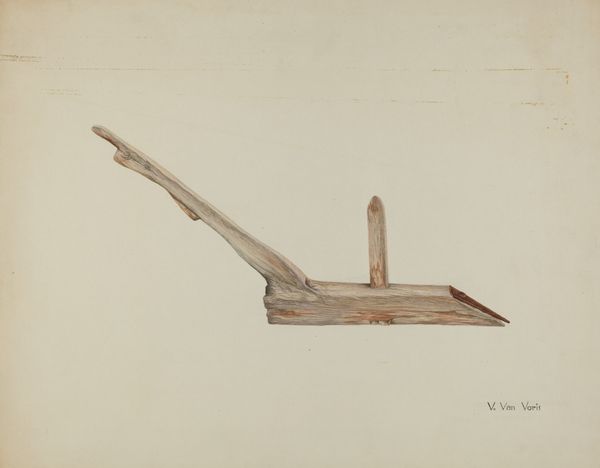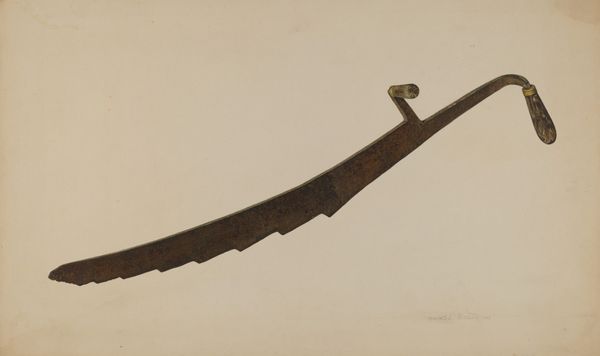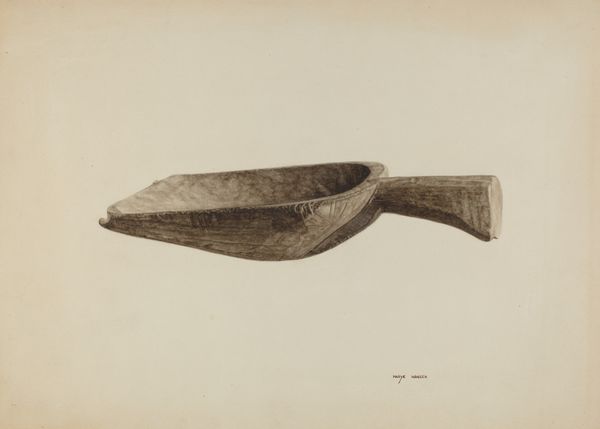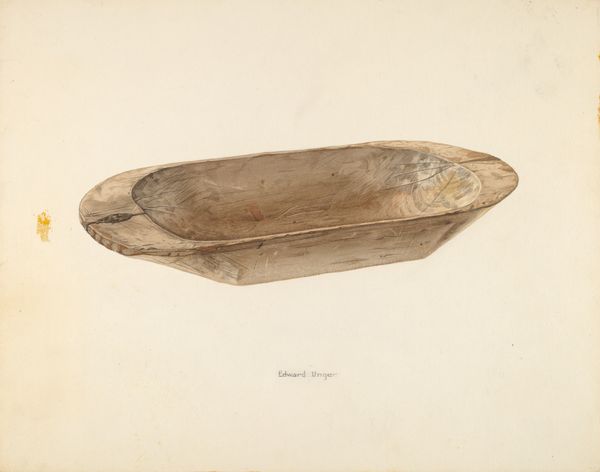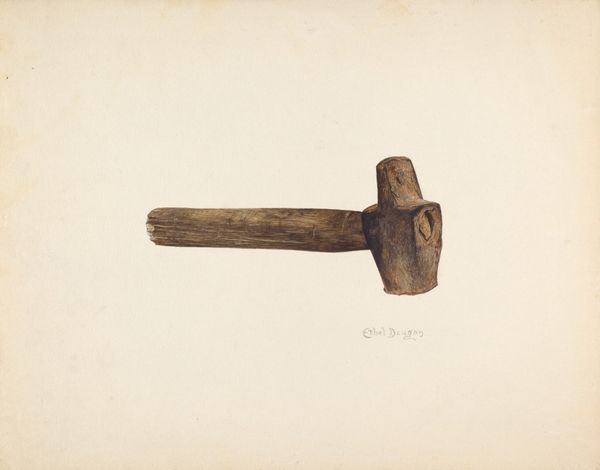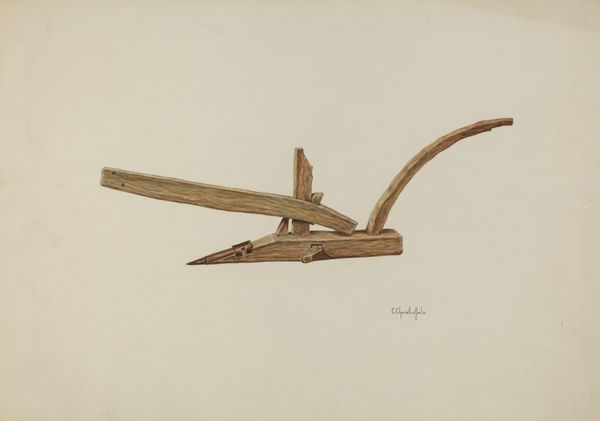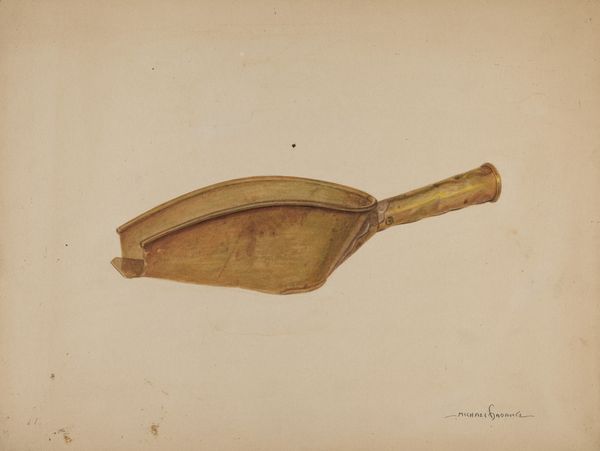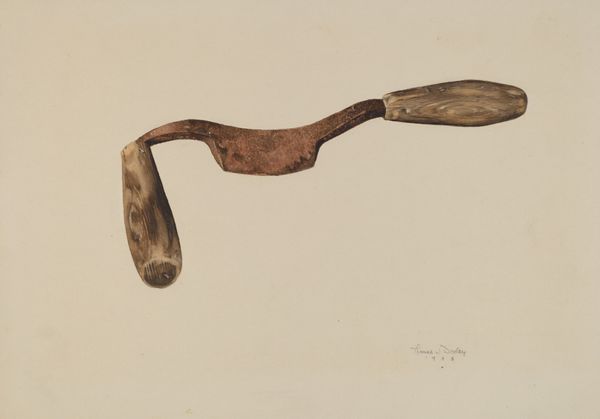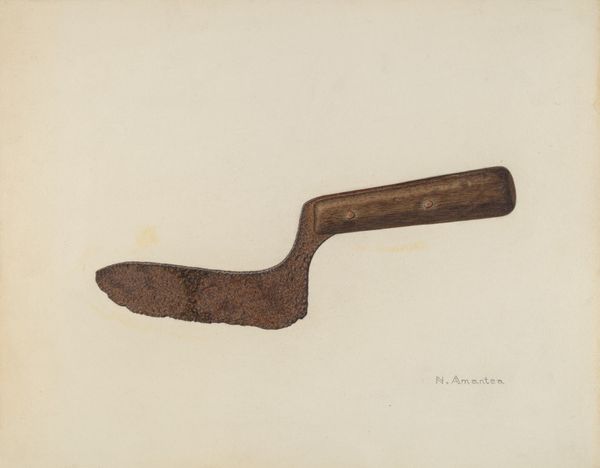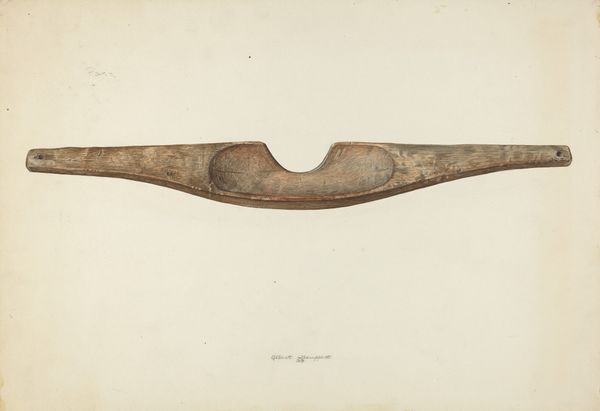
drawing, wood, charcoal
#
drawing
#
charcoal drawing
#
wood
#
charcoal
#
charcoal
#
watercolor
Dimensions: overall: 28 x 40.6 cm (11 x 16 in.) Original IAD Object: 19" long; 1" thick; 7" wide
Copyright: National Gallery of Art: CC0 1.0
Curator: We’re looking at "Bootjack," a drawing made with charcoal and watercolor on paper by Thomas Dooley, around 1939. What’s your initial impression? Editor: It feels like a ghost. An almost ethereal representation of something practical and weathered. There's a fragility in its depiction despite its likely robustness in reality. Curator: Indeed. The use of charcoal captures the object's textures beautifully. The artist focused on line and form to articulate the wear and tear on the wood. Look at the gouges and smooth, curved bifurcated end of the form, rendered in meticulous detail with minimal shading. Editor: And perhaps a certain intentionality in choosing this particular object, given its inherent connotations. I'm thinking of the legacy of manual labor and the representation of rural life, particularly in this period, on the brink of immense societal shifts during the second world war. Who might have owned this? What stories could it tell? Curator: It's tempting to view it through that lens. But what strikes me most is how the composition reduces the object to its bare essence. By placing the bootjack against a plain background, Dooley prompts us to appreciate its design – the elegant simplicity of the form itself, not merely what it symbolizes. Editor: But even that aesthetic choice—to isolate and elevate this functional object—is steeped in meaning. It gestures toward valuing everyday lives and the tools they relied on. There is a politic to valuing certain images or objects during this time, or now. The image could suggest an elegy or monument to this era. Curator: I can appreciate that perspective. But to see the object and medium celebrated by the artist feels equally important here, observing line, shading, and representation as a means for understanding and celebrating an oft forgotten era or way of being. Editor: An interesting, but still melancholic, interpretation. The object is mute. Curator: Yet its silent eloquence lingers.
Comments
No comments
Be the first to comment and join the conversation on the ultimate creative platform.

